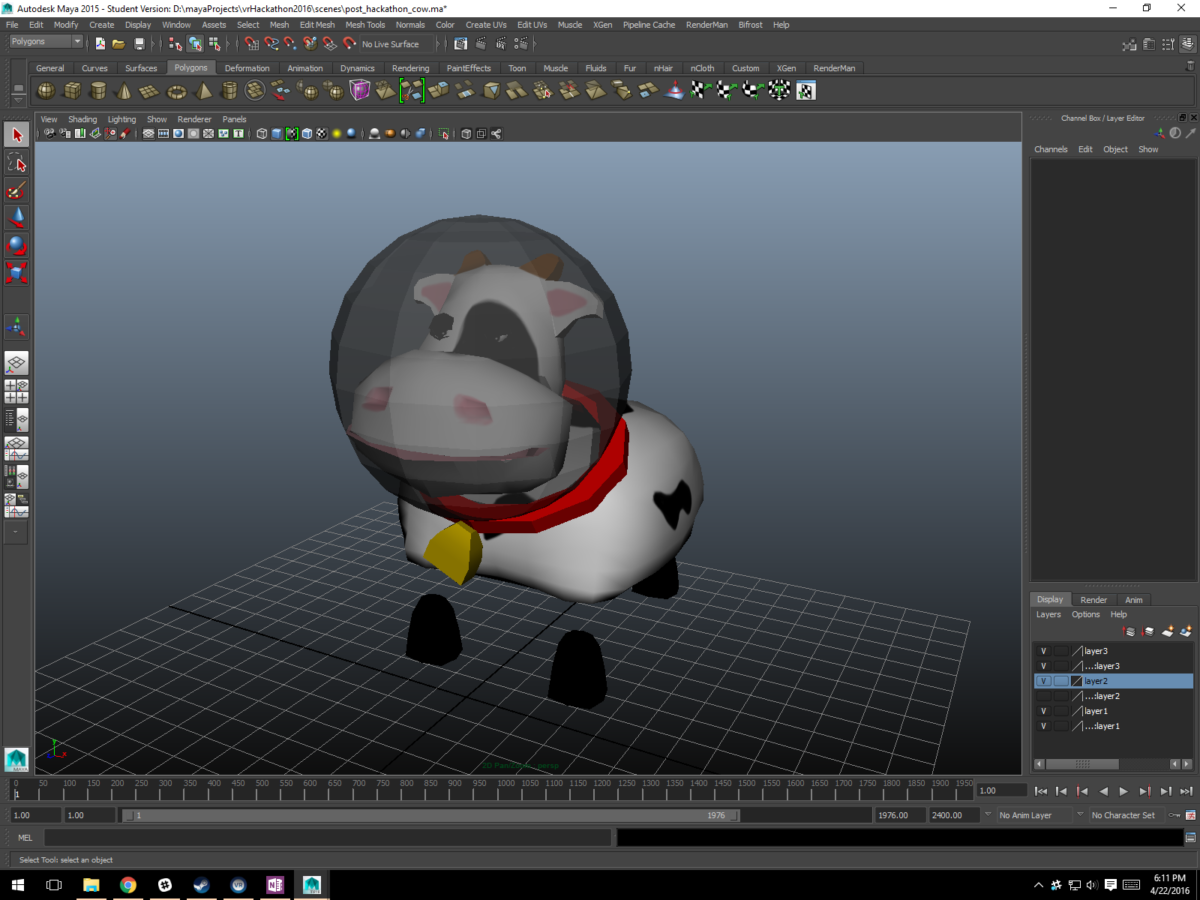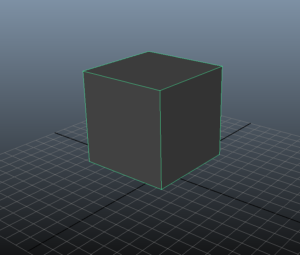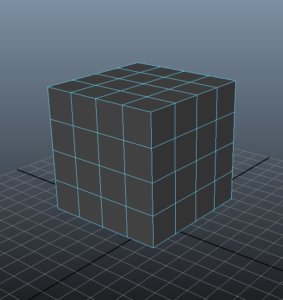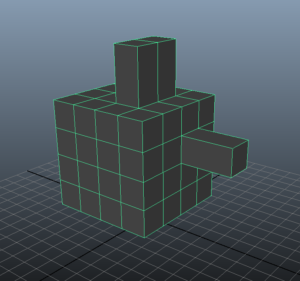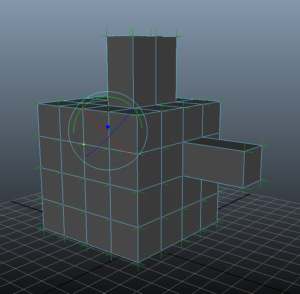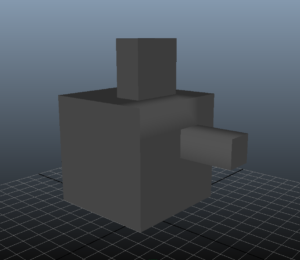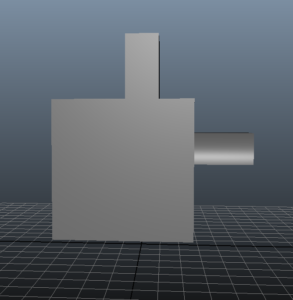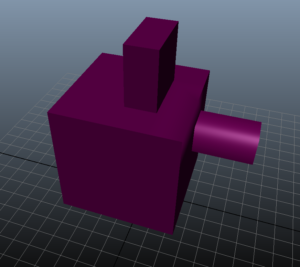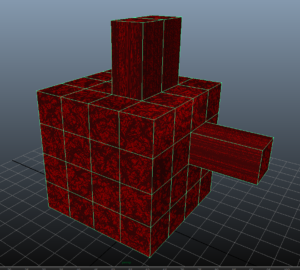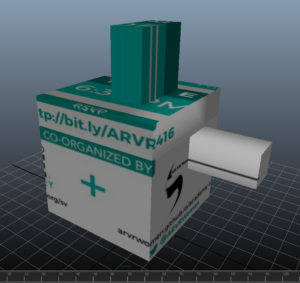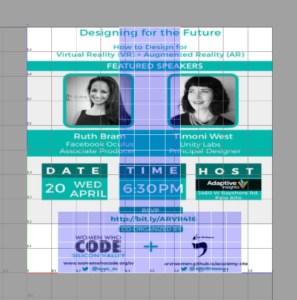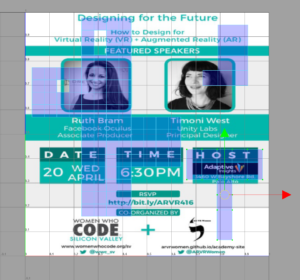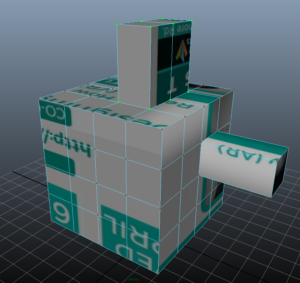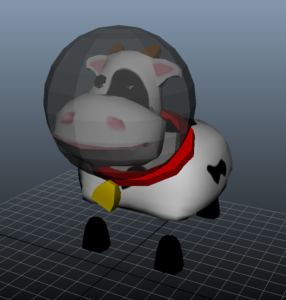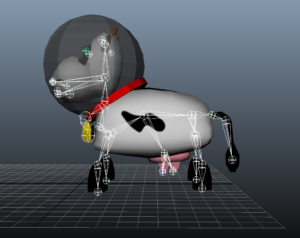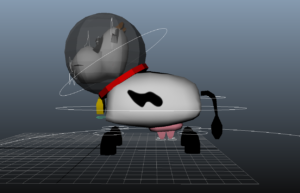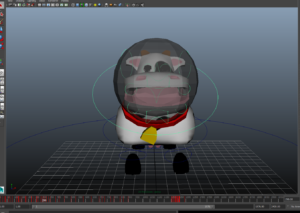How to design Social VR so it isn’t awful.
There have been a fair number of people lately talking about potential problems that Social VR will or already does have. I think that this is the perfect time to start talking about this problem – but at the moment, nobody seems to be talking much about possible solutions. I want to break down what I see as potential problems for social VR, and how we go about addressing them using a combination of engineering solutions and social design solutions.
When you’re talking about Social VR, it’s important to recognize that there are a few different kinds of social VR – just as right now, there are plenty of ways to interact socially on the web that don’t solely exist of social media sites. The basic categories of interactions for social VR will be one on one interactions – you talking to a friend, partner or family member, commercial interactions like business meetings or education, solely social interactions which could include groups of friends or strangers, or mixed groups, and social gaming or social experience, where the social interactions are secondary to some other purpose. While all of these are subject to some of the same problems, not all those problems will be expressed equally, and should not be addressed equally. For example, business interactions are unlikely to experience the harassment problem, but could have other problems associated with miscommunication, or problematic body language – something likely to be experienced more frequently when interacting with people of vastly different cultures.
The biggest problem areas then, are likely to be solely social interactions, and social gaming/social experience – i.e. places where you cannot always guarantee knowing or being able to control all the participants in a particular space, and thus cannot predict or moderate their behavior. Right now, this is frequently a problem experienced both online and in the real world, especially by women or other minorities – the ‘comment section problem’ online, or street harassment in the real world. Solely social interactions are probably more likely to be a problem – because when there’s another activity to engage in, harassment is less likely (though verbal harassment is still extremely plausible, some of the other kinds are not)
Of course, one easy solution is to say “If you don’t like that, then don’t go there, or don’t read that website, or comment on that thing.” This isn’t a solution that I or any other member of those communities like hearing, because it’s not a solution, it’s giving in to the bullies and allowing them to dictate our experience of the world. This is even more important when it comes to VR, because I want to know that it’s safe for me to try new things, meet new people, and experience incredible things in VR without feeling uncomfortable, harassed, or in any way made to feel unwelcome. And that’s something I want for everyone out there – to feel safe in VR.
Now is really the make-or-break time for VR. We have a small window of time to show people that VR is something incredible that they want in their lives, or lose them forever, and it’s not just about the great experiences or the awesome tech, it’s also about those experiences that allow us to connect with human beings a world away. Empathy is going to be one of the biggest drivers of VR adoption once the wow-factor disappears (more on this in another article) so it’s important that we get all of this right, right now, not just for men, not just for white people, but for everyone.
So what are the problems we face?
Firstly, we face most if not all of the problems the internet currently has – repeated low level harassment and bullying, attempts to silence others by bullying, intimidation and social pressure, rape and death threats, obscene or offensive language in unexpected places, age appropriate safe spaces for kids, doxxing, public humiliation or outing, and ban trolling – where you and a team of people utilize reporting systems to harass unoffending users who you simply disagree with, but who isn’t actually breaking the rules. It’s important to consider these existing problems, and look at people who are solving them most effectively when you’re going to build social VR into whatever you’re developing, and I’ll talk about the most effective solutions for these problems in a bit.
Secondly, we also face problems which are unique to VR, such as the problem of personal space. If you’ve ever tried to walk through a wall or off a cliff in VR, you’ll most likely have experienced a small moment of either disturbance or fear, especially if the environment is very realistic. There’s just a mental hiccup, a shiver, before you reassure your lower brain functions that it’s ok, it’s not really real. When someone breaks your personal space boundaries in VR, it’s just as disturbing, if not more so. Having someone else’s face directly in your personal bubble is disconcerting, and uncomfortable, especially if they’re the one instigating it. With a wall or a cliff, you stop, and then reassure yourself. When someone breaks your bubble, you don’t get that moment to pause.
There’s also the problem of teleport stalking – in experiences where I could teleport away when someone bothered me, more than once they repeated the offending behavior, by teleporting to follow me and then doing the same thing. This starts to feel harassing after two or three teleports.
Being surrounded by a group of people – something that happens to me frequently if I’m wearing a female avatar in a mostly male space – can also feel just as intimidating as it does in real life, and can be difficult to get out of, even if you can teleport away, because again, the offenders can just follow you and do the same thing again.
Audio is also something important to consider in social VR – if my personal priority is that I want to hear the person I came to VR to talk to, but someone else keeps getting between us and taking over my audio priority level, this can be annoying and a very frustrating experience. I want to have the conversation I want to have, not the one you want me to be having. Heavy breathing and other disturbing ‘right behind your ear’ sounds and not being able to hide your gender when you talk are also audio problems that should be addressed.
Finally, there’s the gesture problem – one that will only get worse over time as devices and peripherals get better and better – but even now, someone can put their face in your crotch, jerk off with their leap or kinect enabled hands, touch you inappropriately with controllers, etc. All of these are things people have already experienced in social VR spaces – not hypotheticals.
Solving problems is hard!
The good news is that right now you’re reading this, so you’re already part way there to fixing this problem before it gets really bad and really entrenched in VR culture (I hope).
There are some things to consider before you begin trying to implement solutions. For one, you want to make social VR welcoming and safe for all users, without making it extremely restrictive – you don’t want to ban the use of hands just because of a few obnoxious users. You also don’t want to make it difficult for the user to deal with offenders, because when you are having a bad experience, the worst possible rider to that is for it to be difficult to report, block, or otherwise prevent this from happening to you again, because in that case, you’re far more likely to simply leave the VR space and never come back. Recording video and logging audio is also expensive in terms of server space, so how do you solve the documentation problem?
And then there’s the implementation problems – paid external moderation is expensive and doesn’t scale well, but if you make a design that gives users power over others, you can’t necessarily rely on them to use that power responsibly. If you use algorithms to do automatic moderation, you run into problems like those that facebook encounters – it’s already a very difficult problem with text, next to impossible with voice, completely impossible right now with gesture.
The other thing to consider is that permanent banning is difficult and a perennial problem already on the internet. Users may also share devices (especially high end HMDS) with other household members – should everyone be punished for the bad action of one?
Enough already! How do we fix this?
The following is a list of ideas that I’ve come up with that address potential problems in a way that ideally isn’t burdensome to the user. Feel free to use any of these methods, and please let me know if you implement them. I think there’s a potential here to actually change how people operate in reality too – to retrain them in appropriate social behavior that would extend from virtuality to reality. For the most part, these ideas are ones which are designed to make stranger filled social spaces comfortable for all users, where you are physically embodied in an avatar of some sort. This list is somewhat long, so I’m going to switch to bullet points from here out.
- Personal Bubble – Your personal bubble should extend as far as you want it to, but not be a physical collider for other users. Rather, anyone crossing your boundary line would simply become invisible and inaudible to you, and vice-versa. This works better than a physical collider because you cannot use your bubble to affect things like doorways or crowded spaces, nor could you use it to push other people’s avatars around. Comfortable VR requires that the user always have control over their own motion – so changing personal render settings works the best for this. It also enables you to have multiple people in a crowded space, and yet not feel claustrophobic.
- Endorsements – This is a relatively simple and elegant solution for a lot of the problems. An endorsement would allow you to set your own comfort levels for things like personal space and personal audio levels, and then put other people in the appropriate group. The default level 0 would include everyone who is a stranger to you. It would enforce your personal boundary line on all strangers, as well as setting their audio level at a default lower than people who are your friends – level 1. Level 1 users can also come closer to you and still be visible and audible. People who you specifically want to permanently ignore would be level -1, permanently invisible and inaudible to you. For special events (e.g. public speaking events) there could also be high level controls for moderators, e.g. + 5 for a speaker so everyone can hear them, and -5 for the audience if you want them to be silent.
- Ignore object that allows you to easily ignore a user. This could be an actual virtual object like a hammer or a baseball bat, or a fluffy bunny, that you throw at or towards the offender. They’re then booted from your visible environment, and if you’re using the endorsements, they’re set to a -1 level. For them, you simply disappear – this is important, so that they cannot molest or stalk your avatar and be seen by other users doing so. Again, this is something that happened to me.
- Reputation values – if many users have you in their +1 circle, you gain a defense against people who would attempt to get you banned. If many users -1 you, your behavior is monitored and you are potentially banned. Reputation systems are somewhat open to abuse, but given the realtime nature (and roughly limited nature) of interactions in VR, harder to abuse by crowds of people than current social media systems. They’re also pretty valuable in allowing users to set their own preferences outright – e.g. you could be able to set your own preferences for not seeing anyone with a negative rating, for example. Some people would still get around this by convincing others to +1 them, but overall this would solve quite a lot of problems.
- Verified identity. Facebook mostly succeeded because they insisted upon real life names, not usernames. To protect people from real world harassment or doxxing, have a two factor system – where the server knows your verified real world identity, but you still have a display name to other users.
- Robot Voices– using a filter to allow users to disguise their voice as heard by others. Ideally this would be a sort of ‘robot’ agender voice.
- Anonymous and/or honeypot rooms – for users who wish to act without any restrictions on their behavior (other than outright illegal behaviors). Free speech, free action, but for some rooms, all users use the robot voice, and all are anonymous. Attempting to ignore someone in a honeypot room would instead kick the user back to a regular room. Unavailable to minors.
- Avoid hyper-sexualized avatars completely. This is a problem with things like imvu – where every female avatar is basically half clothed, no matter how hard you try to properly attire them, and that leads to certain behaviors from some users. Avatars should be ‘normal people’, agender (e.g. robots) or creatures with no overt sexual characteristics. Hypersexualized avatars again should only appear in certain honeypot rooms – which are only available to people over the age of 18.
- Train users what appropriate behavior is – consider positive reinforcement via messages on loading screens about what is acceptable behavior in that space. When you break someone’s boundary, show a visible indication for you for example, a red screen flash.. When a user gets multiple -1 ratings, coach them on appropriate and specific behavior, including what their bad behavior is, if possible, before they can enter the space again. Use every possible tool in VR to emphasize this – e.g. when a user is due for a ‘coaching’ session before entering the VR space, use a virtual avatar to reenact their bad behavior, where they are the victim.
- Recording behavior – give users a way to record their own sessions easily, and share them. This takes the burden away from the provider having to have server space, and becomes a feature for recording fun things, as well as a way users can monitor their own sessions.
- Activities – give users a lot of different things to do with friends – generally people will be less likely to harass when there are activities of some kind, especially if they are non-competitive and more cooperative activities.
- Restricting the room usage of people who misbehave to honeypot rooms, or other specific restricted spaces.
- Allow users to set the appearance of negative reputation users – if you still want to see everyone so that you get a smooth social interaction, those negative users could have a specific highlight color, avatar item, hat, etc. (e.g. put everyone in an iron mask, scarlet letter A, etc) only visible to you, that would allow you to be more wary of someone with a bad reputation.
- Freeze frame – it can be hard to click on someone to ignore them in VR. A ‘freeze frame’ where the world temporarily stops for you, but you can still interact with the UI would be helpful. This would also be a great way to add a ‘Take a snapshot’ function for users at the same time.
- Gender balance – given verified identities, allow some rooms to be female identifying only, some male identifying only, some with 50/50 balance (with a +/- 1 to allow people to join and leave the room freely). This gives everyone options for how they choose to interact and what spaces they wish to frequent, without feeling restricted to women only spaces if they do not want to.
- Gesture limitation – allow you to choose not to see hands or controllers for others if you don’t want to, and detect inappropriate face/crotch interactions within certain radii. Detecting other inappropriate gestures is probably beyond where we are at this moment in time, but would be ideal in the future.
- Event/organizer level controls that let you choose the only audible people in a room, or temp freeze everyone in spot (could be based on space ownership, doesn’t need to specifically be moderator only)
If there are any more suggestions you have, feel free to let me know!

